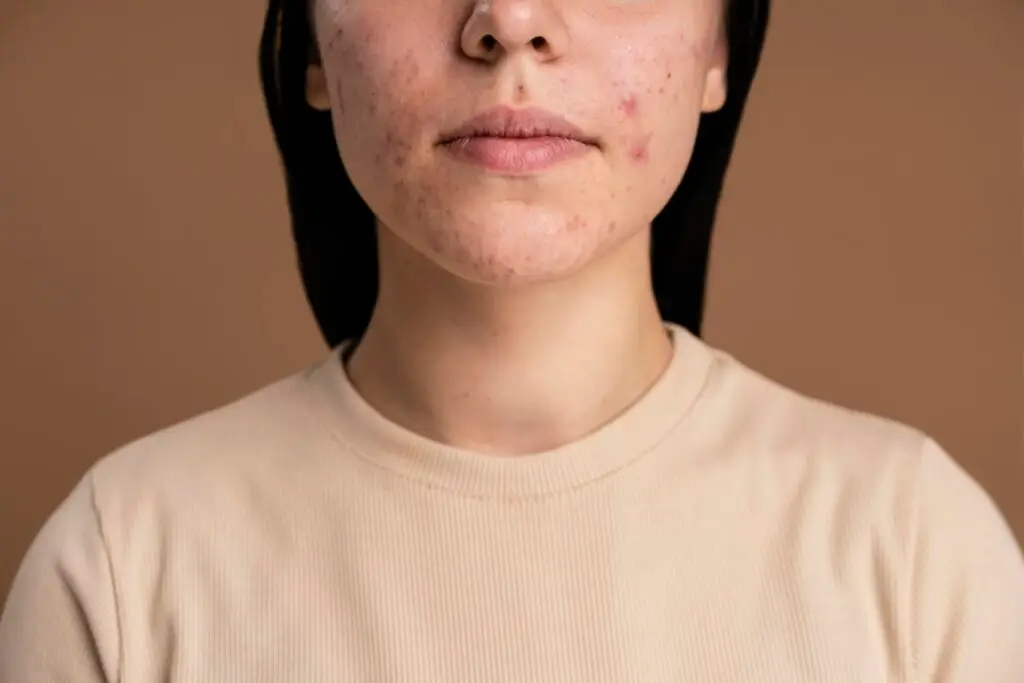- Medical
Acne Scarring
Why Acne Scars Form and How We Help
Acne scarring can affect confidence and quality of life. As skin matures and collagen production naturally declines, scars may appear more visible. The encouraging news is that many effective options are available to improve texture, soften edges, and blend scars with surrounding skin. At Heritage Dermatology, we create a treatment plan that reflects your skin type, scar pattern, and goals. Options may include topical therapies, chemical peels, laser resurfacing, dermal fillers, and minor surgical procedures.
Because every skin story is unique, we begin with a careful evaluation. We identify the types of scars present and consider factors such as skin tone, scar depth, and location. Your plan may combine several treatments to address multiple scar types at once, while protecting the skin barrier and supporting healthy collagen remodeling.
Types of Acne Scars
Atrophic or Depressed Scars
Atrophic scars are the most common. They develop when inflammation disrupts collagen during healing, leaving shallow or deeper indentations in the skin.
Rolling scars
These scars create soft, wavy depressions. They often respond well to collagen-stimulating treatments including lasers and chemical peels.
Icepick scars
These are narrow, deep tracts that extend into the dermis. Depending on severity, treatment may include TCA CROSS, punch excision, subcision to release tethering, and targeted resurfacing to refine texture.
Boxcar scars
These scars are wider with more defined edges. Treatments may include ablative or fractional laser, radiofrequency devices, subcision, fillers to restore volume, and medium to deep chemical peels.
Scars from cystic acne
Deeper inflammation can leave significant depressions. A combination approach is often best, such as surgical techniques for select scars, laser therapy, peels, microneedling, and fillers to elevate the surface.
Hypertrophic Scars
Hypertrophic scars are raised and firm within the borders of the original lesion. Management may include corticosteroid injections, laser therapy, scar surgery, and cryotherapy to flatten and soften the tissue.
Treatment Options
Personalized Scar Management
Most patients benefit from a combination of techniques. Fractional laser can smooth superficial irregularities, fillers can replace lost volume, and minor procedures such as punch excision can remove individual deep scars. Your dermatologist will map out a sequence that balances results with downtime and comfort.
Steroid Injections
Corticosteroid injections can soften and reduce the height of thick or raised scars. This helps improve texture and comfort over a series of treatments.
IPL Photofacial
Intense pulsed light targets redness and discoloration that can linger after acne. This helps even skin tone and reduces the visual contrast that makes scars more noticeable.
Fractional Laser Skin Resurfacing
Fractional lasers deliver columns of energy into the skin to stimulate new collagen while leaving surrounding tissue intact. This improves tone and texture and gradually elevates depressed scars. A series is often recommended for best results, with healing typically measured in days.
Dermal Fillers
Hyaluronic acid or biostimulatory fillers can lift select depressed scars with minimal downtime. Subcision may be performed at the same visit to release fibrous bands, followed by filler to support a smoother surface.
Surgical Revision and Excision
For deep or sharply edged scars, precise surgical techniques can refine the shape and reduce shadowing. Surgical revision is often combined with resurfacing or peels to blend the area.
Chemical Peels
Physician strength peels using agents such as AHAs or TCA can improve texture, clarity, and mild to moderate depressions. Your peel will be chosen based on scar type, skin tone, and desired downtime.
What to Expect
Treatment plans are staged over time to allow the skin to heal and to build collagen gradually. Your dermatologist will guide you on skin care before and after each session, including sun protection and barrier support. Many patients see steady improvement in smoothness, light reflection, and overall skin confidence as treatments progress.
The right approach depends on scar type, location, thickness, age of the scar, and your skin type. Schedule a consultation with Heritage Dermatology to receive a personalized plan that helps your scars blend more seamlessly with the surrounding skin and supports long term skin health.

